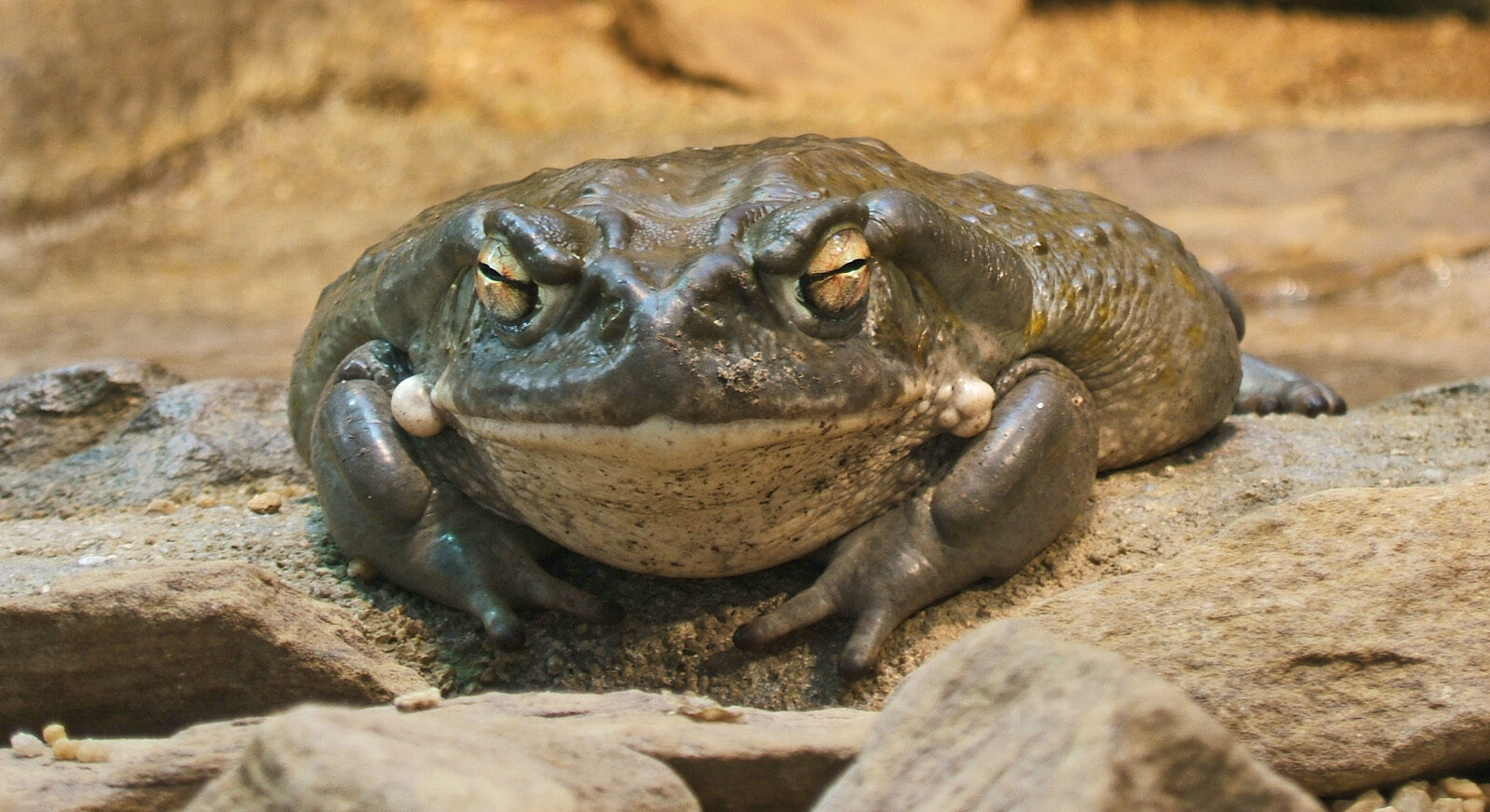About
All toads secrete toxins from glands in their skin, the purpose of which is to repel predators. The amount, potency, and composition of these secretions vary by species, and sometimes, geographic location. Most toads found in the U.S. produce mild toxins, though these can be strong enough to kill a coyote or dog. Other components of these substances are hallucinogenic compounds that have long been used by humans for various cultural practices. Recent research indicates that a specific chemical found in Sonoran toad secretions (and also some plants and fungi) can help alleviate symptoms of depression and anxiety.

STATUS
The International Union for Conservation of Nature has listed the Sonoran toad as of Least Concern due to its large population, tolerance of habitat modification, and wide distribution.
HABITAT
Indigenous to northern Mexico and the Southwestern United States (southern Arizona and parts of California and New Mexico), the Sonoran toad lives in both deserts and semi-arid areas, usually breeding in small pools or streams, however, it is also known to inhabit small rodent borrows as well.
DIET
The diet of the Sonoran toad is carnivorous, with typical meals consisting of small insects, rodents, reptiles, and sometimes even smaller toads.
PHYSICAL CHARACTERISTICS
The Sonoran toad is one of the most enormous toads in North America at around seven inches in length. Besides a few white warts around the jaw’s angle and on the hind legs, these toads have relatively smooth skin. The toad has a cream-colored underbelly and a greenish-gray back, most likely used to blend into its surrounding environment to evade hunting predators. Even though not many differences can be observed between the sexes, males can be distinguished by thick calluses that form on the inside of the thumbs during the breeding season.
LOCATION WITHIN THE ZOO
You’ll find this animal in the Desert LAIR. See Zoo Map.

